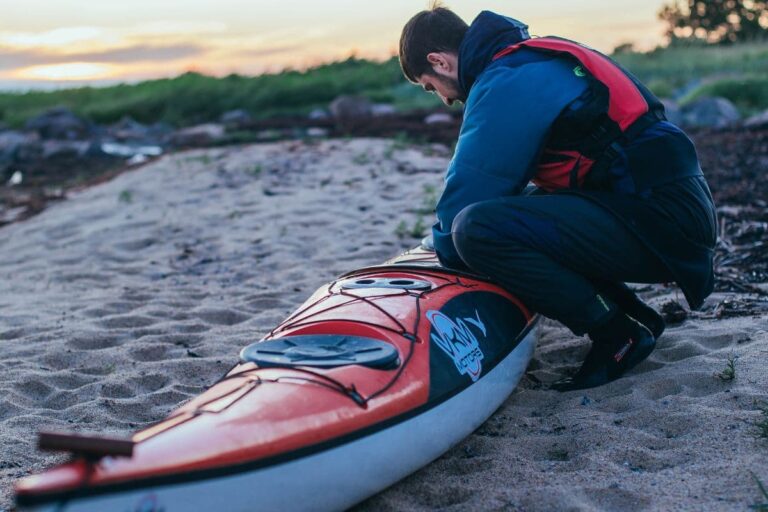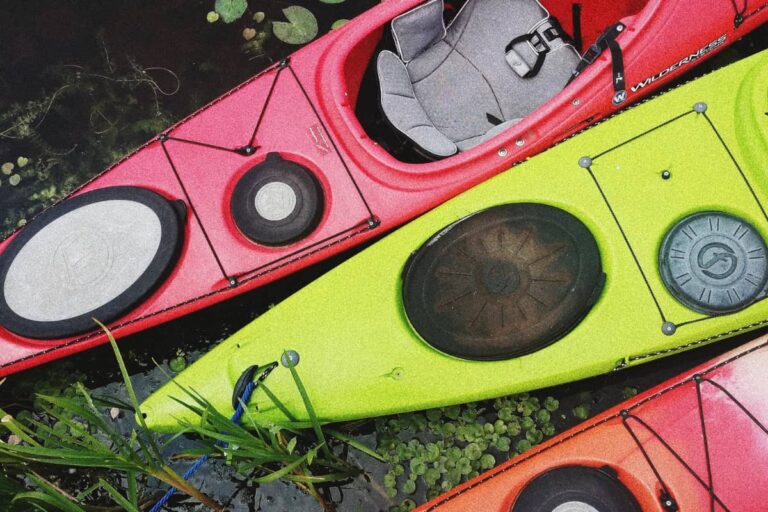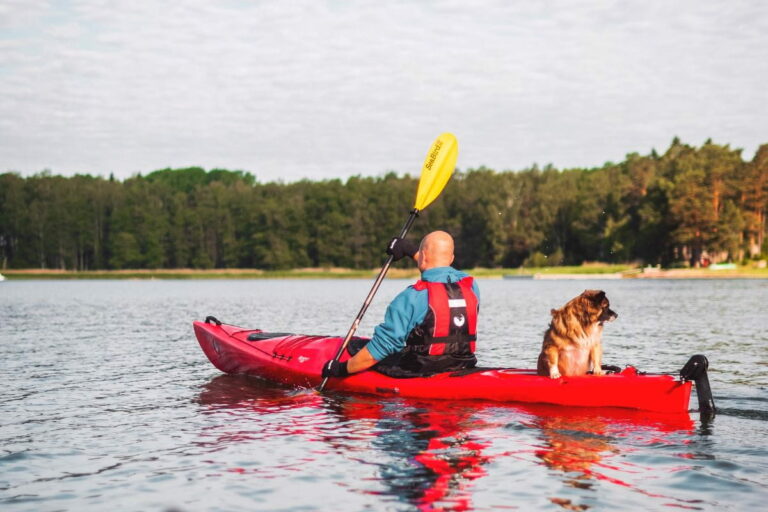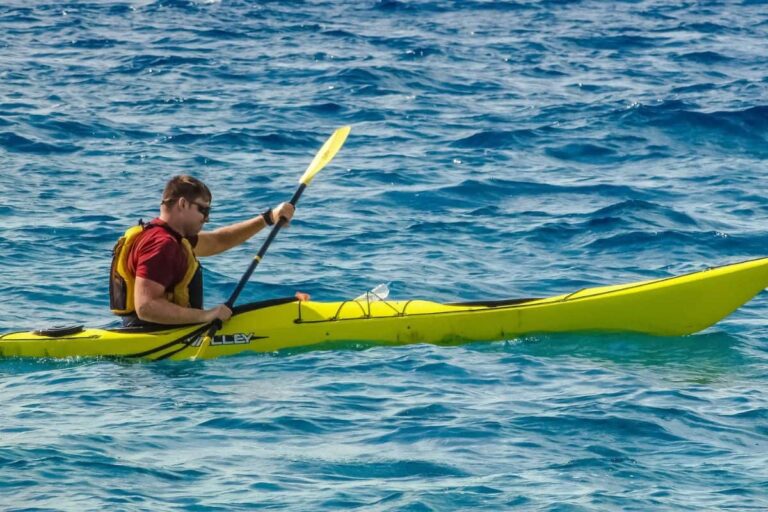How To Choose The Right Kayak? (4 Main Factors)
Kayaking is similar to any water sport, in that you need the right equipment that suits the kind of kayaking you want to do.
When choosing a kayak, there are many categories to consider that play a pivotal role in how enjoyable, and safe, your time out on the water will be.
Spending some time to make sure you find the ideal kayak for your needs is time well spent; however, there are so many different types of kayaks out there, it can be difficult to choose the right one for you.
When selecting the right kind of kayak for your needs, you need to factor in the type of kayaking you plan to do, the type of water where you plan to paddle, kayak length, whether you want a sit-inside or sit-on-top boat, and how many people the kayak needs to hold.
Available options include tandem kayaks, folding kayaks, sit-on-top and sit-inside kayaks, touring kayaks, pedal kayaks, and the list goes on!
Since the variety of kayaks is so diverse, the process can be overwhelming.
Choosing the right one can be fraught with uncertainty, especially if you are new to kayaking.
Our guide for choosing your own kayak will help you navigate these waters and get the right boat for your kayaking needs!
How To Choose A Kayak
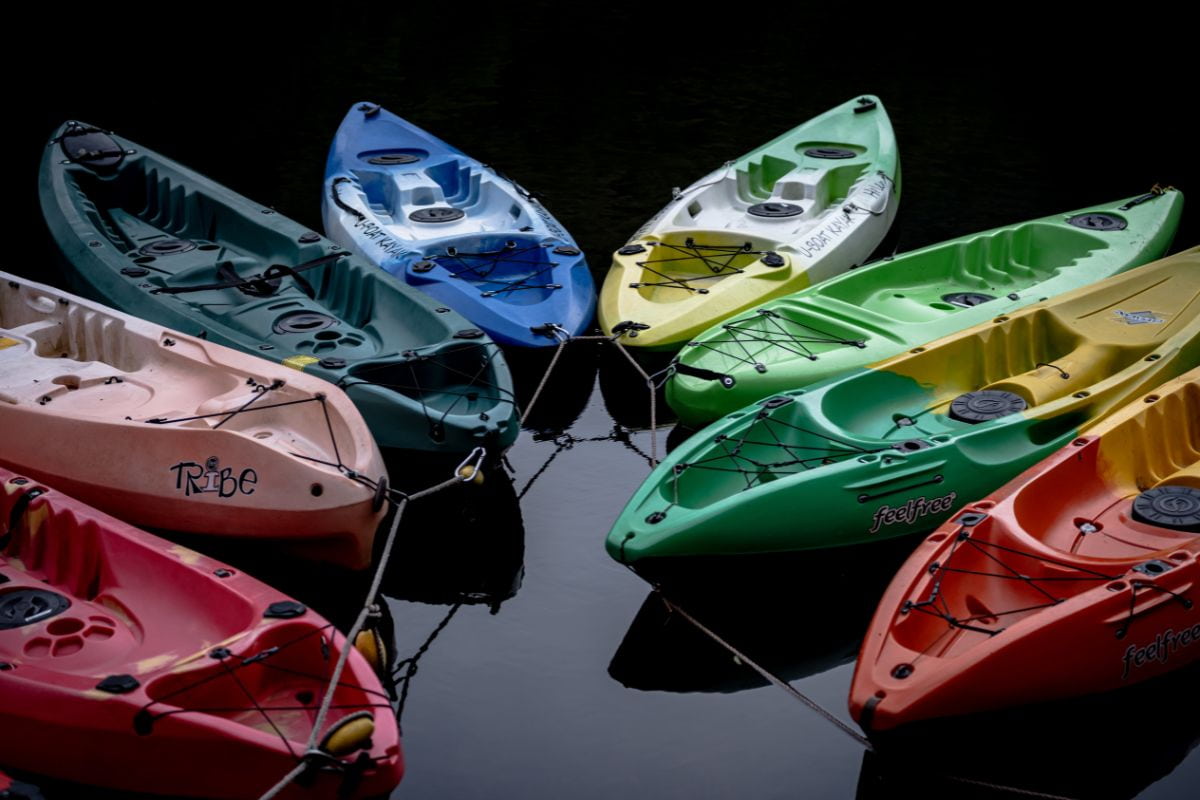
Selecting the right kayak for your adventure will make all the difference between an enjoyable outing or a complete nightmare of a trip!
If you don’t enjoy being out on your boat, you are unlikely to continue using it.
Just as all cars are not the same, kayaks also have specific design features based on their intended use and the environment in which they will be used.
The first step of your decision-making process should be based on the type of kayaking activity you want to do.
Then you can determine what size kayak you need, how much cargo space you require, the weight capacity you’ll need and, finally, your personal preferences.
What Will You Use The Kayak For?
Different kayaks can be used for a variety of activities. The various types of kayaks include:
Fishing kayaks
These kayaks are designed with a wider hull that offers stability and can carry additional gear.
They often include extras, such as pedal systems to propel the kayak so that the kayaker’s hands are free to fish, and rod holders.
A pedal kayak can also be used if you want your hands free for other things, like taking photos or watching birds.
This type of recreational kayak generally has more cargo space to store all the gear you need.
Racing kayaks
If you’re interested in competitive kayaking, you’ll need a narrower boat with a pointed nose and stern.
These boats are much less stable, and take some time to get used to, but once you become familiar with the balance aspect, you can’t beat these kayaks when it comes to speed on the water.
They’re often made from lightweight fiberglass for better performance, and have a rounded hull, for increased speed and maneuverability.
Endurance or touring kayaks
If you enjoy adventure kayaking and plan to travel for several days, you’ll need a touring kayak.
This type of kayak must include adequate space to store supplies, preferably in watertight compartments.
Light touring kayaks are longer and narrower than most recreational kayaks, making them relatively less unstable and more difficult to master.
Whitewater kayaks
Whitewater kayaking is an extreme sport and requires a specialized kayak that can handle rough, turbulent waters and the possibility of hitting rocks in the water.
These kayaks are shorter and wide to handle rough water and negotiate tight turns and gaps.
Recreational kayaks
If you’re just looking for an enjoyable day out on the water, then you’ll need a kayak that provides plenty of stability and safety, and one that’s not difficult to master.
Most recreational kayaks are usually average in length.
Inflatable kayaks
These boats are a good recreational option for kayaking beginners, since they’re both lightweight and quite durable.
An inflatable kayak is also easier to transport than a hard-shell kayak, since it can simply be deflated.
Where Will You Use The Kayak?

The type of water where you plan to use your boat plays a crucial role in your kayak choice.
Both the design of the boat’s hull and material from which it’s made will be determined by its intended purpose.
When it comes to how each kayak is made, the hull’s shape is also important.
A flatter hull makes the boat more stable, which makes these types of kayaks great for recreational paddling in calm waters.
A round hull makes the boat travel faster, and provides better maneuverability.
Sea kayaks
Sea kayaks are built to maneuver through surf and swells.
A sit-on-top kayak is often a preferred choice for surf kayakers, because the waves can’t fill this type of boat and cause it to sink.
A touring or sea kayak is also roomier inside, which gives kayakers more space to stretch their legs on long trips.
Another alternative is a sit-in kayak with a splash cover (or spray skirt) that seals the kayaker inside the cockpit, and prevents water from flooding the boat more effectively than a sit-on-top kayak.
Most of these kayaks are made from polyethylene plastic, which is designed to resist impact and rough sea conditions.
River kayaks
Fiberglass, carbon fiber, composite, and plastic are common material choices for river kayaks (with fiberglass, carbon fiber, and composite being preferred for most river kayaks, and plastic for whitewater kayaks).
Dam, pond, and lake kayaks
These bodies of water are often referred to as flat water, but the conditions out on larger lakes and dams can become surprisingly rough when the wind kicks up.
Any type of kayak can be used on flat water – generally, the only kind of kayak that is not used in these waters is whitewater kayaks.
How To Choose Kayak Length
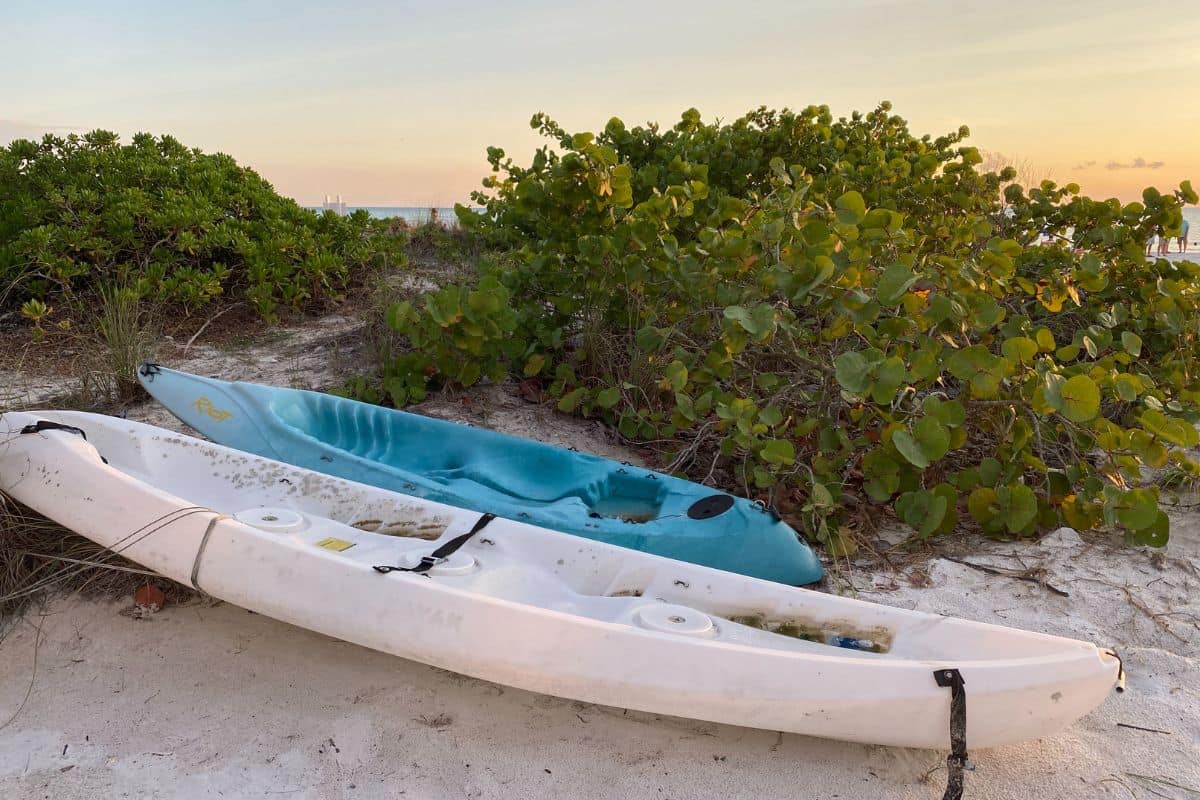
Kayaks vary in length within each for which category they’re designed.
Longer kayaks are often used for racing since they can slice through the water, and shorter kayaks are best for narrow waters because they’re easier to maneuver.
Generally, the longer and narrower a kayak is, the faster it can go, and the more unstable it will be on the water.
Conversely, the shorter and wider a kayak is, the slower it will be on the water, but it will be more stable.
Recreational kayaks generally range from anywhere from 8-13 feet long.
Once you’ve determined the activity you plan to do with your kayak, you’ll be able to narrow down your preferred length based on a few criteria:
Your kayaking skills
If you’re a beginner, a shorter, wider kayak would be better as you learn how to paddle.
A more experienced kayaker may select a narrower, longer boat.
Sit-on-tops are generally recommended for children.
Transport limitations
Many beginner kayakers forget to take this point into consideration when buying a boat.
How will you be transporting your kayak to and from the water?
Can your vehicle handle a longer kayak, or should you opt for a shorter model, or perhaps an inflatable kayak that you can transport more easily?
Obviously, a lightweight kayak is a better option for a child.
Your weight and height
A smaller kayak may not have the buoyancy needed to suit your weight and height, so depending on your size and the kayak’s carrying capabilities, you may need to choose a larger or smaller model.
Personal Preference In Kayak Choice
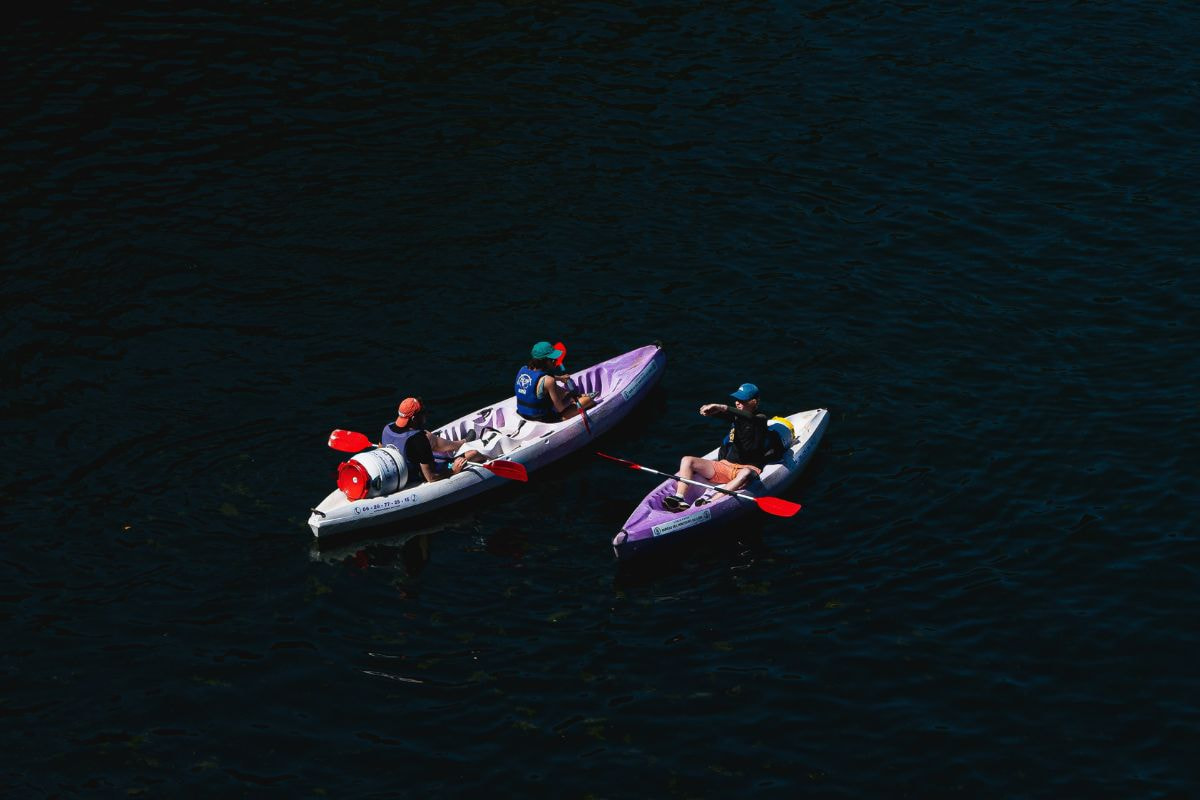
The final aspect of choosing a boat is based on your personal preferences, such as:
Sit-in kayaks
This kayak can come in various styles and materials.
A stable recreational sit-in kayak will give you better protection from the elements.
If you paddle in all weather conditions including cold weather and long distances, you may want to consider a sit-in kayak for additional protection.
A boat with a fixed tracking fin will also help you navigate choppy water (you can take out the tracking fin prior to paddling).
A sit-in touring boat tends to be more stable than a sit-on-top kayak, due to your lower center of gravity in the sitting position.
These boats come in different models, including recreational boats, day-touring kayaks, and touring models.
They also conveniently have covered cargo compartments, so you can use them as long-journey touring boats and single-day touring boats.
Sit-on-top kayaks
Sit-on kayaks leave you exposed to the elements, which is okay if you do most of your kayaking in the summer.
These kayaks are less likely to capsize if water splashes on top of the boat.
They have scupper holes, which ensures that water drains through the boat.
Sit-on-top kayaks are generally wider than sit-in kayaks, which improves their stability and generally makes them slower than sit-in kayaks.
They have better initial stability (which refers to the boat’s stability when you first get on) than sit-in kayaks.
These kayaks are often used for kayak surfing, sea kayaking, and paddling on rivers and lakes.
The number of people in the boat
Some kayaks are made for single kayakers and others can hold more people.
If your intention is to take more than two people out for a fun day on the water, your choice should be a purely recreational boat.
Some inflatable kayaks work well for this option, but the rigid hull boats are generally intended for single kayakers (or a maximum of two).
Conclusion
Once you’ve settled on the type of kayaking you’ll be doing, it is best to consult a professional for any final pieces of advice.
There are many choices, add-ons, and features that may influence your final choice, so it’s crucial to speak to someone who can advise you on the best options for your needs.
Whether you prefer to paddle solo or with friends, kayaking is a rewarding, peaceful, and enjoyable way to spend a day out on the water.
Table of Contents

